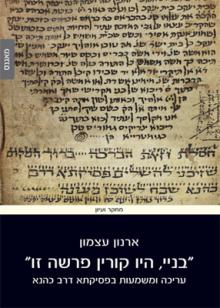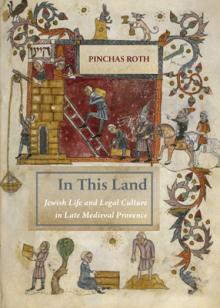Publications
-

"My Children, Read this Passage Every Year" Composition and Meaning in Pesikta De-Rav Kahana
SummaryPesikta de-Rav Kahana (below: Pesikta) is arguably the most structurally complex midrashic composition in the landscape of the classic midrashim. The Pesikta was probably composed in fifth century Palestine and consists of sermons on special Sabbath and festival Torah and Haftarah readings. The work was designed to influence the atmosphere of the synagogue during events of calendrical significance and is therefore of great importance for reconstructing the spiritual and cultural encounter that took place between the sages and their synagogue audience. The Pesikta, whose very discovery and reconstruction were beset by multiple obstacles, remains in some ways an unsolved mystery and many questions concerning the context in which it was created continue to occupy scholars to this day. Up until now, the scholarly world has produced only partial and incomplete studies of the Pesikta and its formation. This book, “My Children, Read this Passage Every Year”: Composition and Meaning in Pesikta De-Rav Kahana, is a comprehensive attempt to fill this gap and afford a glimpse into the workshop of the Pesikta's editor.
-

In This Land: Jewish Life and Legal Culture in Late Medieval Provence
SummaryJewish communities existed across the county of Provence throughout the Middle Ages. In This Land reveals the changes that those communities underwent during the late-thirteenth and fourteenth centuries and the social and cultural tensions that shaped their identity.
Legal responsa and other genres of rabbinic literature produced in Provence during this period – many of them previously unpublished – provide access to aspects of the past that have long gone unnoticed. Engagement with legal culture played a central role in the formation of medieval communal identity, providing both a language and a forum for the airing of grievances and the demarcation of social legitimacy. Relations among different ethnic and religious groups, warring spouses, legists and local power brokers were negotiated through the intricacies of Jewish law or Halakhah. Through a close and historically contextualized reading of rabbinic sources, this book provides a startlingly vivid portrait of Jewish life in southern France during the later Middle Ages.



